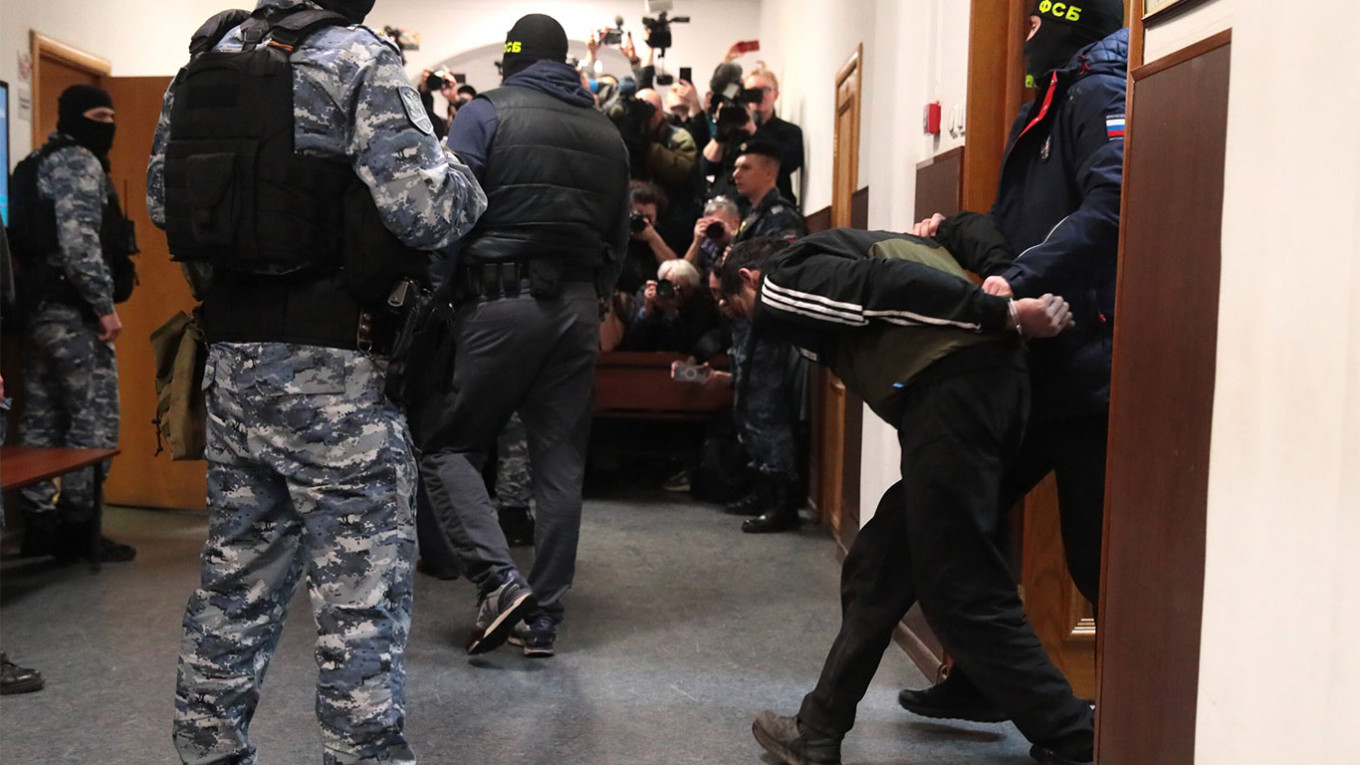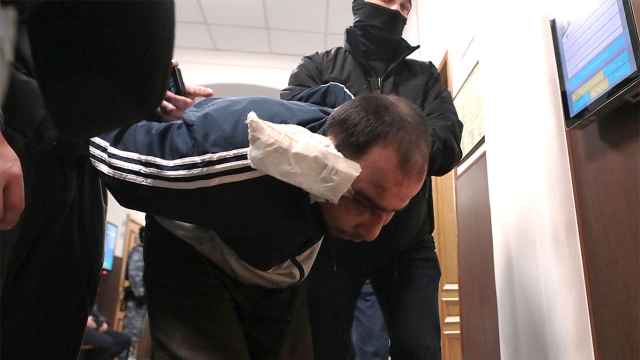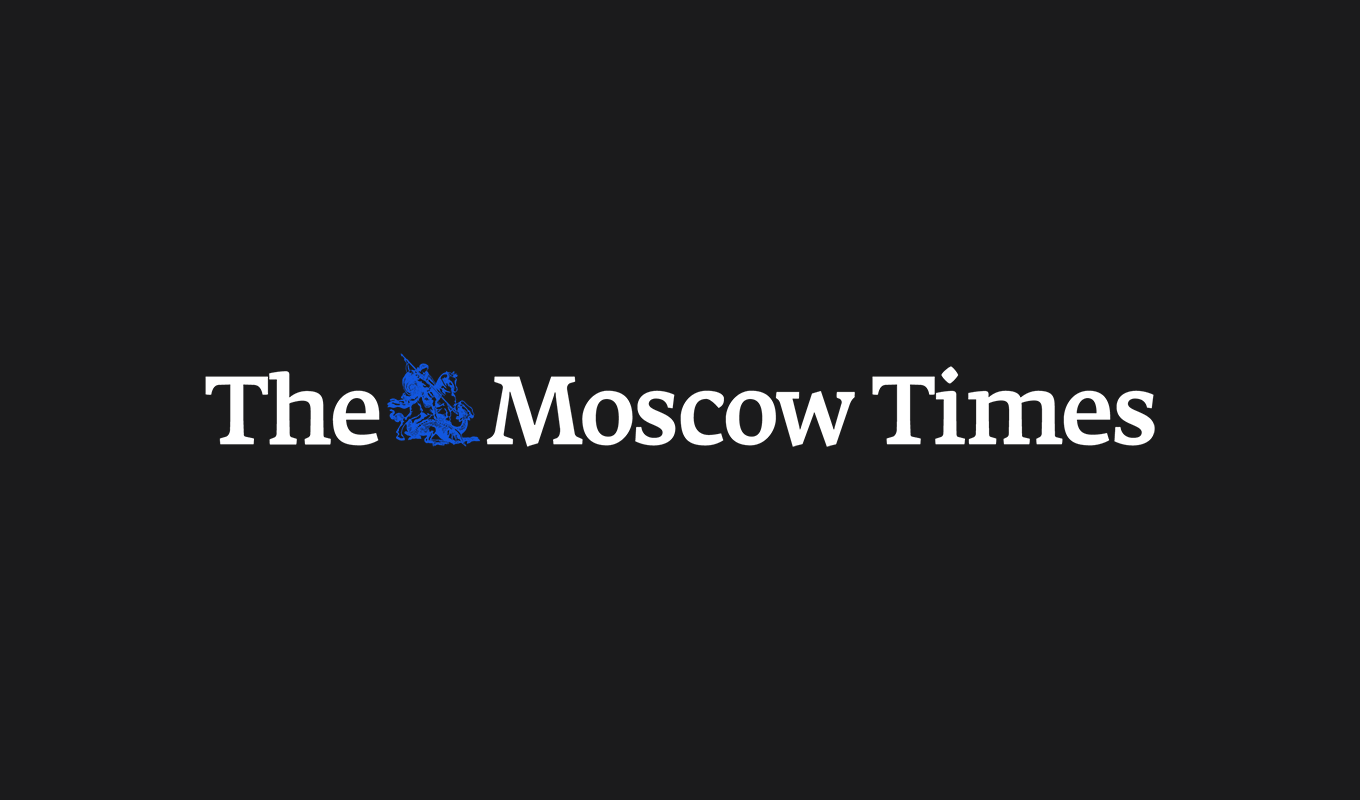The videos of masked men shooting at members of the audience in the Crocus City Hall concert venue were unbearable to watch. But they were soon followed by other shocking images. Footage published on social media associated with the Russian security services showed one of the suspects being beaten with rifle butts, and his ear being cut off.
Other images later emerged — a photo of another suspect in a school gym, where he is lying on the floor with wires connected to his genitals. In photos and videos from the court, evidence that the detainees were tortured was on full display.
In a strange symmetry, ISIS-K has also published its own videos taken by the terrorists in the concert hall. Terror groups often produce and spread videos of their atrocities to showcase their might, recruit supporters, and instill fear in their enemies. Violence becomes their way to express their ultimate power over the lives of civilians who are suddenly defenseless in the face of brutal and inhuman force that aims to destroy them.
When agents of the Russian state publish such images, they essentially do the same. Even though their violence is directed at suspected terrorists, its proud demonstration shows everyone that the state has complete power over human life through law enforcement. Human beings are reduced to their physical bodies that can be destroyed, tortured, and humiliated, often gleefully and theatrically. No longer conducted in secret, violence is made public, it is celebrated and enjoyed.
Torture has been used by the Russian police, FSB, and prison authorities before. In recent years, evidence has emerged of the widespread use of rape, or the threat of rape, by prison officials against male prisoners. Here the state has embraced the worst practices of the traditional Russian prison subculture, with its violent denigration of the downtrodden caste. But, despite leaked videos of torture, such violence was kept largely out of public sight.
The torture of prisoners of war and terror suspects in the 21st century is not unique to Russia. The brutal images of the torture of Iraqi prisoners in Abu Ghraib by U.S. army officers created waves of horror and revulsion around the world. The prisoners were subjected to sexual humiliation, while some were attacked by dogs and were electrocuted.
All of this was photographed by their torturers, who smiled happily for the benefit of the cameras that recorded these atrocities. These images, leaked to the press, were not meant for public consumption. The American state tried to distance itself from the act and prosecuted the perpetrators.
But the recent Russian case is very different. The latest images were distributed by state security personnel themselves and, when asked about the alleged torture, President Vladimir Putin’s spokesman Dmitri Peskov simply refused to comment.
The public (and officially condoned) character of the Russian state’s inhumane treatment of detainees is hugely significant. By glorifying torture, the Russian state shows that it is no longer a civilized modern country, as it has reverted back to medieval forms of punishment. In these societies, as philosopher Michael Foucault showed, punishment was inflicted directly and publicly on the body through the stake, the scaffold, and the pillory. Modern states have moved away from this theatricality to more humane forms of punishment. The spectacle of human suffering has been withheld from public view.
The public return of torture coincides with the carnivalesque celebration of violence by representatives of the Russian state. Since the start of the war against Ukraine, state propagandists and politicians have reveled in rhetorical violence, and called for the destruction of Ukrainian cities, the murder of Ukrainian children, and even the use of nuclear weapons. The public is invited to share the grotesque celebration of violence, death and destruction with propagandists such as Vladimir Solovyov and Margarita Simonyan or state representatives including Foreign Ministry spokesperson Maria Zakharova and Security Council deputy chair Dmitry Medvedev.
Visceral punishment infused with vengeance is promised to all enemies and traitors. Speaking about the members of the Russian Volunteer Corps fighting for Ukraine, Putin has promised to “hunt them down.” Such a clear threat of extralegal violence by the head of the Russian state shows what little weight is given to the rule of law and normal procedures of justice.
Another sign of the descent into pre-modern forms of penalty is an increasing use of traditional rituals of shaming and humiliation. Modern states left behind using shame as an instrument of public control long ago, replacing it with more rational and humane methods of control and punishment.
In today’s Russia, instead of in public squares, people are shamed on TV and on social media. In recent years, the practice of forced apologies has spread from Ramzan Kadyrov’s regime in Chechnya to the rest of Russia. Ordinary citizens and celebrities are made to apologize for a variety of deviations, from “disrespecting” national symbols or saying subversive things to wearing the wrong clothes that go “against Russian traditional values.”
All these processes have been developing in Russia for many years under Putin. But the war has brought them to the fore. Alongside the rise of medieval forms of punishment, we also observe another reversal of modern statehood. Over the years private forms of violence have become increasingly acceptable, which modern states sought to eliminate.
The state now embraces everyone who could be of use in its war effort, and especially people with a history of violence. People who had previously been seen as pathological individuals are now highly valued. Yevgeny Prigozhin openly invited murderers to join his private army. Following in his footsteps, the Russian state welcomed criminals, including those convicted of violent crimes, giving them amnesty and suspending their prison sentences if they agreed to go to war.
Russian neo-Nazi militants have also been allowed to become part of paramilitary groups and even the state itself. One of the torturers of the Tajik suspects in the video wore far-right insignia. According to Andrei Kartapolov, the chair of the State Duma's Defense Committee, when Russian neo-Nazi volunteers fight against Ukraine, this means that “they have already mended their ways.” The “excesses” of these individuals are tolerated even if they potentially create bad publicity for a government that claims to be fighting Ukrainian “Nazis.”
Russia’s descent into the dark ages is very worrying, especially as the resurgence of medieval forms of penalty and validation of private violence also coincides with the wide use of modern technologies of surveillance. Russia, particularly in major cities such as Moscow and St. Petersburg is approaching Chinese levels of total population control. The possibilities created by this uncanny combination of pre-modern and modern practices of power are truly dystopian.
A Message from The Moscow Times:
Dear readers,
We are facing unprecedented challenges. Russia's Prosecutor General's Office has designated The Moscow Times as an "undesirable" organization, criminalizing our work and putting our staff at risk of prosecution. This follows our earlier unjust labeling as a "foreign agent."
These actions are direct attempts to silence independent journalism in Russia. The authorities claim our work "discredits the decisions of the Russian leadership." We see things differently: we strive to provide accurate, unbiased reporting on Russia.
We, the journalists of The Moscow Times, refuse to be silenced. But to continue our work, we need your help.
Your support, no matter how small, makes a world of difference. If you can, please support us monthly starting from just $2. It's quick to set up, and every contribution makes a significant impact.
By supporting The Moscow Times, you're defending open, independent journalism in the face of repression. Thank you for standing with us.
Remind me later.








